How To Choose The Right Process Of Silicone Molding?
Speed, cost, and precision in the final product design are key criteria when selecting a fabrication method for making silicone products.
Available processes for making molded silicone products include:
- HTV /HCR(Hot/room temperature vulcanization) silicone molding.
- Liquid silicone rubber injection molding (LIM or LSR molding) .
- Multi-color Precision co-injection Dripping molding.
Learn More About Silicone Molding Method And Process
So, how to choose the right process for silicone molding?
1. Silicone material.
The silicone material is made up of carbon, hydrogen, oxygen and silicon. The food Grade Silicone material meets FDA and EU requirements for food contact and safety.
The food grade silicone material is soft and comfortable, environmentally friendly, non-toxic, and degradable. They are also, Lead, Reach, BPA, PVC Free.
There are two shapes of silicone material. Solid silicone rubber and Liquid silicone rubber. When you want to select a fabrication method for making silicone products, you need to choose the material first. Please check the difference in silicone material to know more details.
Further Reading: Silicone Material
2. Silicone molding method and process.
A:HTV /HCR(Hot/room temperature vulcanization) silicone molding:
a1: One color silicone molding
a2: Silicone overmolding with other material
Solid silicone is the most common type of material used in compression molding. The HTV silicone molding. It is also called Silicone Compression Molding. Silicone Compression molding has been used to mold rubber parts since the beginning of the rubber manufacturing industry. It is one of the oldest methods still used to mold silicone rubber parts.
Silicone Compression molding is the process of silicone molding in which a preheated solid silicone material is placed into an open, heated mold cavity. The mold is then closed with a top plug and compressed in order to have the material contact all areas of the mold.
This process is able to produce silicone products with a wide array of lengths, thicknesses, and complexities. The objects it produces are also high in strength, making it an attractive process for a number of different industries.
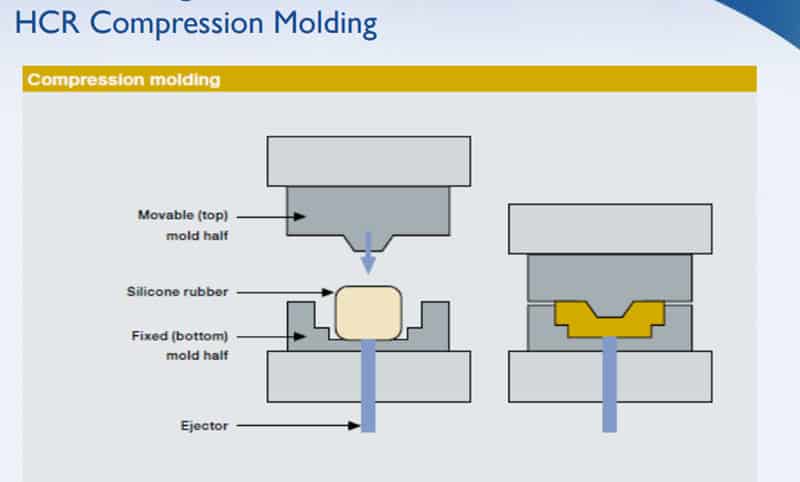
a1: One-color silicone molding
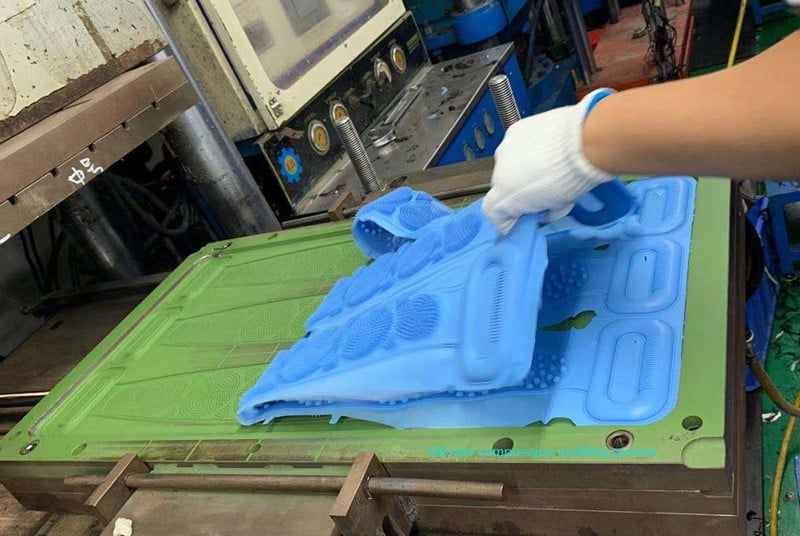
Silicone Compression Mold Tooling: We can manufacture your silicone compression sample mold out of steel, copper, and Alu. When do mass produce mold, we will make them in steel.
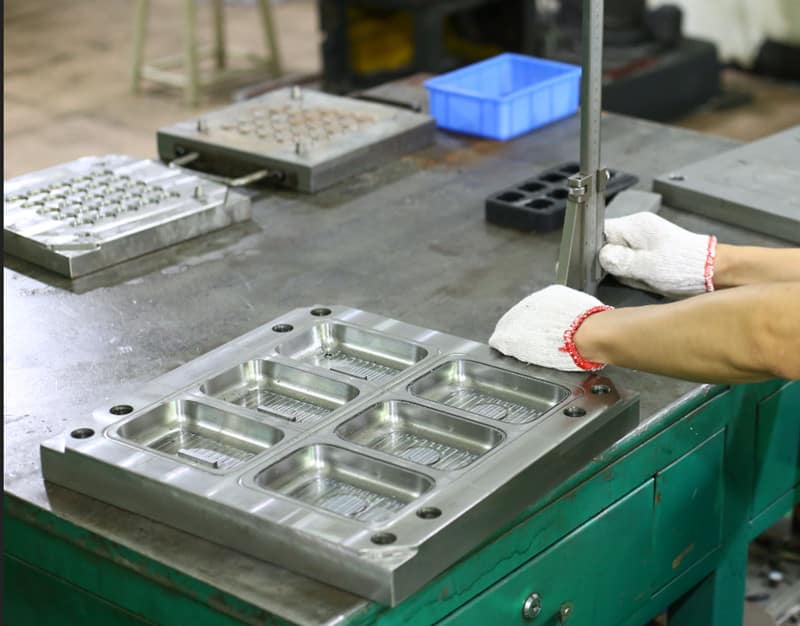
a2: Silicone overmolding with other material (Silicone, Metal, Plastic, etc)
- Silicone Over Silicone-First a silicone substrate is molded. Then another silicone is molded onto or around the substrate. The silicone could differ in color and/or hardness.
- Silicone Over Plastic – First a rigid plastic substrate is molded. Then a soft Silicone is molded onto or around the substrate. This is often used to give a soft grip area to a rigid part.
- Silicone Over Metal-First a metal substrate is machined, cast, or formed. Then, the substrate is inserted into a silicone compression molding tool and the silicone is molded onto or around the metal. This is often used to capture metal components in a silicone part. That is today’s process that we would like to show.
Advantages of Silicone Compression Molding:
Wall Thickness: This technique allows diversity in wall thickness. Generally, the design can vary between 1.3 mm to 2.54CM.
Seamless: A uniform part is created without any flow lines or knitting. Gaskets are a great example of how Silicone compression molding allows for a cohesive part. The part is ejected with a good surface finish immediately.
Lower Costs: As a low-pressure mold, the production of multiple cavities is done at a lower cost.
Good for High-Volume Manufacturing: Although this technique has a longer cycle time, it is a low-pressure mold, which means it’s inexpensive to produce a variety of cavities without high tooling costs.
Disadvantages of Silicone Compression Molding:
Slower Cycle Time: The time needed to start and repeat the sequence of operations is between 1-6 minutes for Silicone compression molds; a much slower cycle time than LSR injection molding.
Lower Productivity: When flash (the resin that escapes between two parts) occurs, it must be manually trimmed, thus slowing down productivity. Additionally, you’re unable to regrind this excess material, which creates more waste.
Higher Human Capital Investments: As previously mentioned, flash is removed manually on compression molds, which generates higher labor costs.
Simple Parts: This technique is best reserved for uncomplicated parts
B: Liquid silicone rubber injection molding (LIM or LSR molding).
Liquid Silicone Rubber (LSR) molding is the process used to create robust, pliable, high-precision, high-quality parts in large numbers.
Liquid Silicone Injection Molding produces parts that are highly water-repellent and resistant. As such, coupled with the precise nature of their sizing, they’re ideal for use as seals, membranes, electrical connectors, and a variety of other medical, commercial and domestic applications.
Liquid injection molding, or LIM, is a production process commonly used to make silicone products or to make products that need to withstand extreme conditions, regardless of the industry. The process is an injection molding process at heart, meaning that materials are injected into a pre-made mold, where they’re then left to sit and curate. Then, the process repeats itself until the part run is complete.
Liquid Silicone Rubber injection molding has thousands of applications across a variety of industries, including medical, automotive, infant care, general industrial markets, aerospace, electronics, and many other specialized industries. While liquid silicone rubber injection molding works best for short- and long-run part production, customers can employ the process in the final stages of mass production
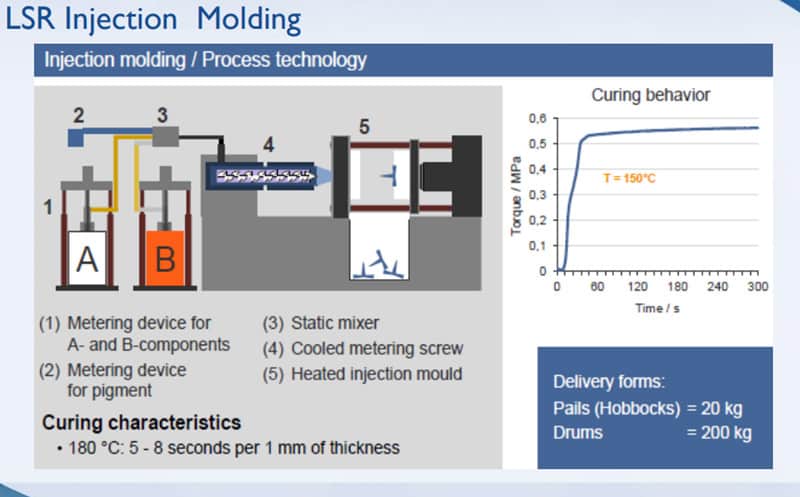
b1: LSR molding

b2: LSR over-molding with different material(Silicone, Metal, plastic, etc)
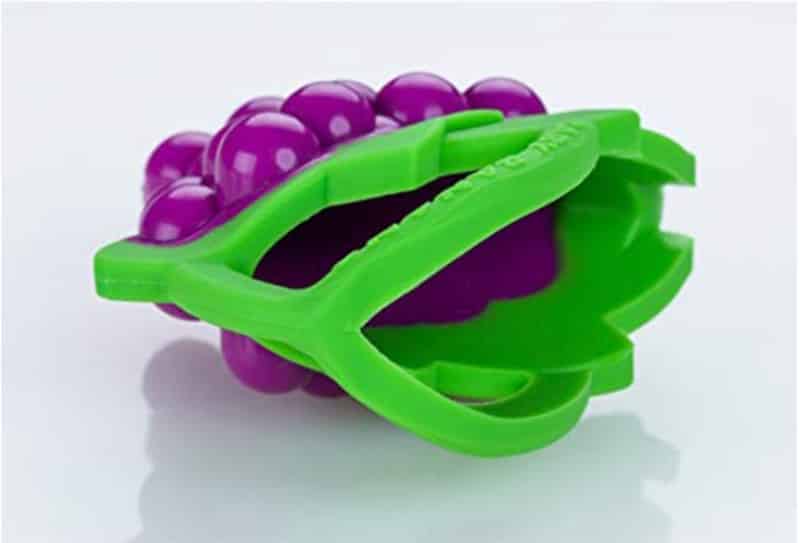
Silicone Over Silicone-First a silicone substrate is molded. Then another silicone is molded onto or around the substrate. The silicone could differ in color and/or hardness.
Silicone Over Plastic – First a rigid plastic substrate is molded. Then a soft Silicone is molded onto or around the substrate. This is often used to give a soft grip area to a rigid part.
Silicone Over Metal-First a metal substrate is machined, cast or formed. Then, the substrate is inserted into a liquid silicone molding tool and the silicone is molded onto or around the metal. This is often used to capture metal components in a silicone part.
Advantages of LSR molding.
LSR molding is ideal for creating silicone products or parts that need to withstand extreme temperatures. Seals, o-rings, isolators, electronic components and other parts in the aerospace and automotive industries are common applications. Here are some of the advantages of the LIM process if your product run:
Durable: LIM parts are able to hold up to extreme temperatures, which makes them ideal for parts under the hood of cars or near engines on airplanes. LIM parts are also often fire retardant and won’t melt away or warp like those that are created via similar injection molding processes, such as plastic injection molding.
Tensile Strength: To piggyback off of the above advantage, LIM parts are strong which makes them applicable to a variety of industries.
Flexibility: Remember, LIM parts are typically silicone. And one characteristic of silicone is its flexibility.
Accuracy: Another big advantage is the high level of accuracy that LIM parts are produced with.
High Volume Production: A combination of the molding process and cycle time creates high volume in production. A simpler supply chain and quicker assembly create higher productivity.
Less Waste: Don’t expect excess flash here, as injection molding produces less scrap and waste.
Disadvantages of Liquid silicone rubber Injection Molding.
High Tooling Costs: Each new mold needs its own new tool. Not only can this be expensive, but it can also extend unwanted lead-times.
Expensive Material Costs: The cost of materials can be as high as 9x more expensive than compression molding silicone
Part Restrictions: Although it’s possible to produce a large part using injection molding; if the machine needed to create it is large, the tool is extremely expensive to create.
C: Multi-color Precision co-injection Dripping molding.
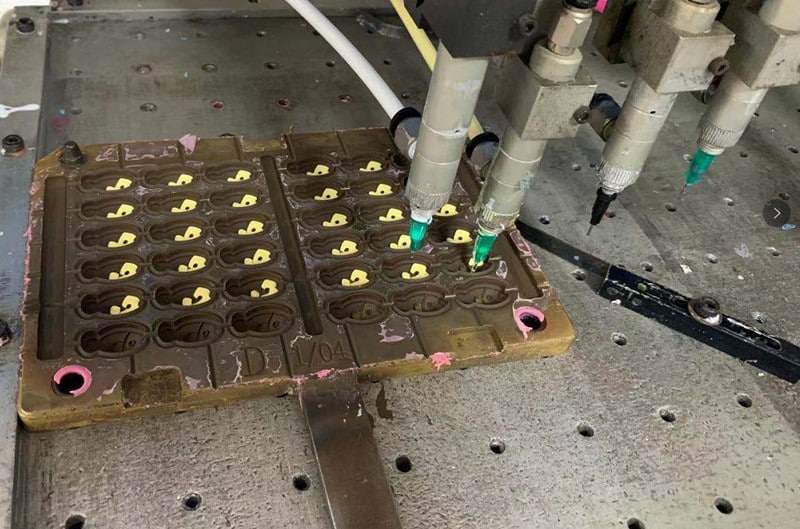
Co-injection dripping molding allows two different silicone material(solid silicone rubber and liquid silicone rubber) to be combined into a single product stream.
This specialized process can be used to enhance product color performance and reduce cost without any penalty to cycle time or production volume. Depending on the materials selected and the application, Co-injection can be used to improve production efficiency and allow for greater design flexibility.
Co-injection dripping molding can be used for a wide range of applications across any industry including Consumer electronics (Cute Iphone12 silicone case, I pod case, I pad case), Beauty products(cosmetic bags, brushes).Promotional gifts(Colorful products include: Key chains, purse bags, fashion accessories and gifts).
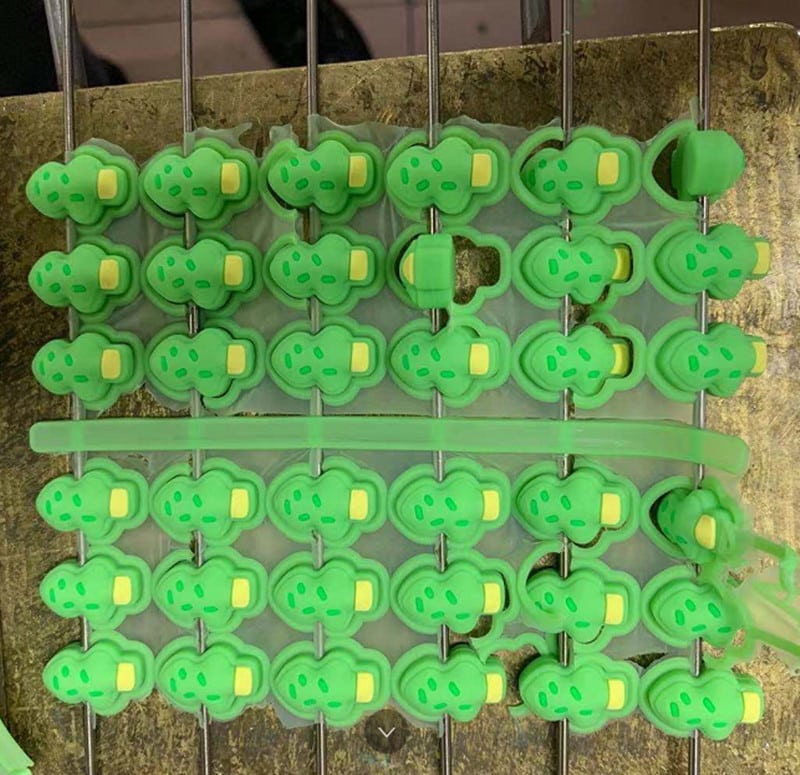
Advantages of co-injection Dripping molding.
Design: Multi-colored. You can get 12 colors in one product without any printing.
Flexibility: Can make the 3D show with the products.
Attraction: More attractive and cute as gifts for kids and Women
Disadvantages of co-injection Dripping molding.
Expensive material costs: The cost of the material and making process is more expensive than compression molding silicone.
Process complexity: Need add heat process for liquid silicone rubber before the solid silicone rubber molding
3. Select the best process.
After your look through these 3 silicone molding methods. Have you known how to choose the best silicone molding process now? It supremely depends on what you’re producing.

4. Conclusion.
It’s important to select a manufacturer who understands which technique best suits your part, as that should be the deciding factor. Regardless of which one is better suited, ZSR group has the capabilities to cover all your silicone compression, LSR injection molding or co-injection Dripping molding needs.
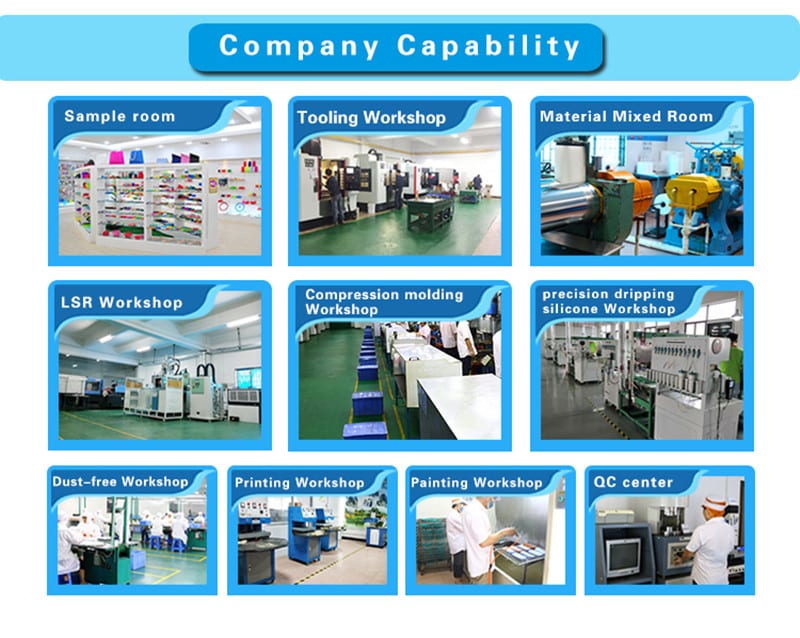
Technical Related
About Author: Z.S.R International Group
Z.S.R International Group(Hong Kong) co., Limited, is a one-stop supplier for molded silicone products and silicone products molding solution provider in the consumer products field. We offer OEM services from product design to Silicone products contact manufacturing. We have the capability for LSR molded silicone products, solid silicone molded products, molded silicone multi-colored products. We also can custom molded silicone, custom molded LSR, custom molded dripping injection dispensing (co-injection) silicone multi-colored products, custom tooling.
